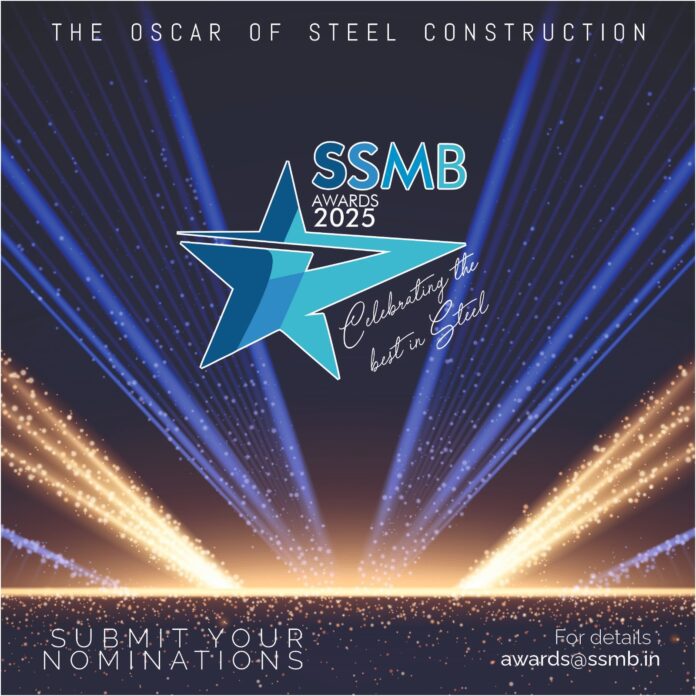He has gained experience working with international players… he is an expert in adaptive reuse and restoration of Grade-A listed heritage buildings… he has traveled extensively just to quench his architectural thirst… & he is all ready to bring about the much-needed change in the Indian construction industry…
here’s
Mr. Siddarth Money, Partner, KSM Architecture
What are the major advantages of using steel vis-à-vis conventional materials?
Every design starts from a certain ideation level and it depends on the typology of what the calling of a particular building is. Certain materials for certain buildings just naturally draft and fall into place, becoming an adept choice. Additionally, steel has a dual advantage over many other materials. One being sectionally small means giving more space, to the interiors. The second would be steel’s ability to span across large spaces very efficiently. Anybody who likes machine aesthetics would love the rawness of steel. There are stunning steel structures dating back 100-200 years in England, Scotland and other parts of the world which have captured the imagination of millions with their brutal honesty.
We are also very careful about how and where we use steel. We like to use a palette of different materials and use steel where appropriate. It’s like an Indian Thali, where there are so many other accompaniments alongside the staple dish.
How structural steel can be innovatively used in construction to provide design aesthetics and at the same time offer an economical solution?
When it comes to certain structures like factories or PEB structures, large span structures, railway stations etc., steel is the preferred choice. Purely from the fact when spans go beyond the maximum reasonable sized RCC structure say 10 meters, 12 meters, or 14 meters, one cannot use concrete which is heavy and has its limitations. Metaphorically speaking, it’s like expecting a large land animal to fly like a bird. For such lightweight, large-span structures, you want it to feel airy, you want to put skylights, it has to have that sense of finesse, lightness, so that the space can feed off from that whole experience from above, and the space automatically starts to flow naturally. No matter how one builds a structure, that envelope that space and steel is a material that can get the job done beautifully with a minimum number of supports or in terms of framing which can still bring in a lot of light, etc. The lack of heaviness with steel structures is quite amazing.
As for the economy, it really depends on what one is putting it against. For large-span structures, steel is definitely economical. With the current situation, using steel in small structures makes the cost at par with conventional construction or in some cases even expensive due to the associated costs that come with building with steel.
I think choosing the right material which is apt for a certain type of building or space or experience, is critical, the fundamental set and you will see the economy in it when your choice is right. The economy is a result of the correct choice-making.
What is your take on the variety of sections or grades that are provided by the steel producer to create versatility in design?
There are a number of sections readily available in the market today, be it rolled sections or tubular sections or square sections, etc. Building with sections is like playing with Lego; one has got all the fundamental building blocks and pieces and it is really up to the designer how he puts them together. I think one doesn’t need a hundred and one sections to build a good structure, even ten good sections can come together to make great architecture. There are a thousand and more ways to use steel sections whether they are I-sections, T-sections, channel sections, tubular sections, etc. An architect has to use their imagination, use the structural consultant’s knowledge, and put it together and come up with something amazing.
What trend do you think we are going to witness in the next five to seven years as far as the designing structure with steel is concerned?
There is a lot of talk about CO2 and greenhouse emissions. It was actually quite startling to note in one of the presentations at SCS Chennai that carbon emission from steel is only slightly lesser than concrete, they are almost at par. The advantage that steel has over concrete is the volume per cubic meter. The usage of steel per cubic meter is much lesser than concrete, so even if the CO2 emission is at par, a steel structure will have much less carbon emission since the material used is lesser.
In the next five to seven years, lots of changes are going to take place in the construction industry in terms of policy, in terms of being more conscious, judicious, wastage of material and in terms of making structures more efficient. I think with a little bit more push from designers and maybe exploration from suppliers, manufacturers and other stakeholders, a good eco-system is going to develop across the board and not just in terms of steel. Having said that, steel will automatically move to the top as an option since it can be used to build structures off-site, it’s recyclable and it ticks so many right boxes.
What should be the strategy of the industry in promoting structural steel construction in India?
There is inertia in not just the construction industry, but in every industry. We are used to doing things in a certain way and it is always a challenge to bring about change and accept a change of direction and pace, so bringing in and accepting change, unfortunately, is always slow. As Dr. Srinivasan rightly pointed out in his presentation at SCS Chennai, the IS codes in India have not changed since they were written and he is one of the code makers in the industry. Change is needed in the construction industry be it at a bureaucratic level or in terms of codes or in other sectors. The wheels of change need to flow and be accepted readily.
Also, the core industry information and codes need to be readily available to everyone not just preserved in a book. Perception is what needs to change the most. Once perception changes, information is easier to access and the approach to designs and codal provisions can become lighter and more accessible. If one wants to make a change then information access needs to be easier on every front so that the stakeholders who provide support also are ready to do something new and not avoid and keep doing the same thing because doing something new is cumbersome. Why not take it a step further and create an app which gives access to all the codes and information that we need!
Which are the iconic steel-specific projects executed by you?
One of the projects worth mentioning is a factory in Sriperumbudur. The project idea was to use local bricks and reduce concrete usage. Steel forms the primary structure interspersed with courtyards and trees within the factory premises. I feel, in certain projects, there is a sweet spot where one gets a good balance between the spatial experience and an ideological goal one wants to achieve. This was one such project that gave us immense pleasure where we feel we found that perfect balance.




